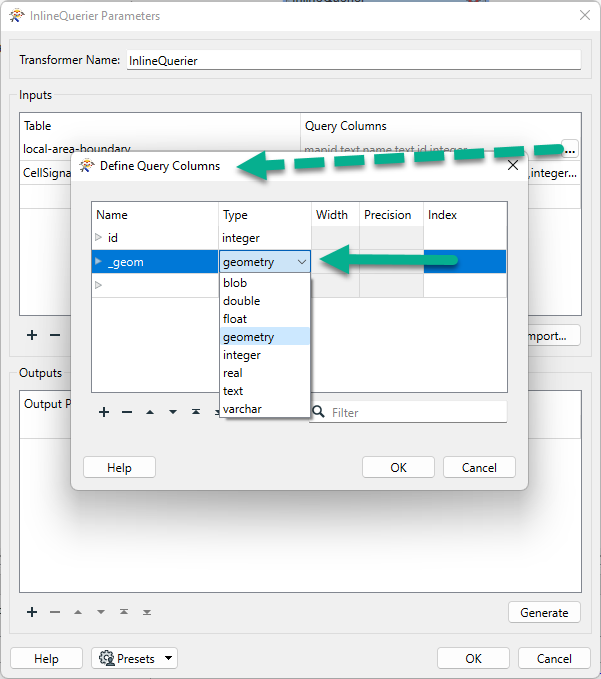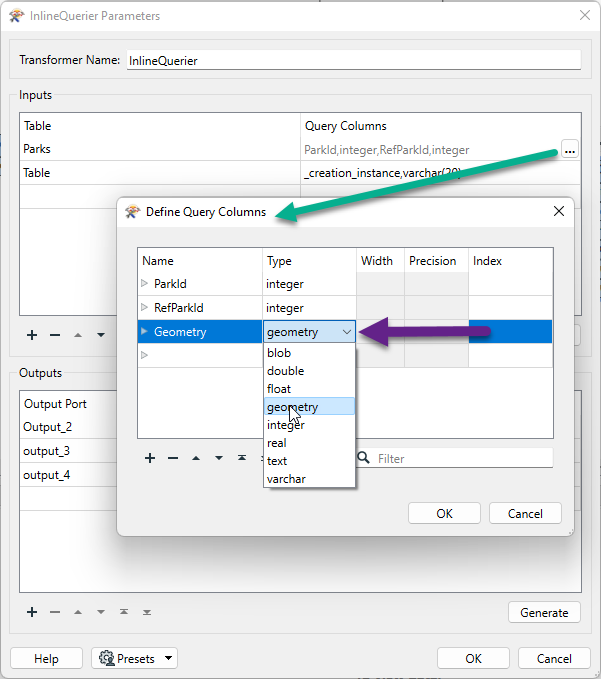In the new, fantastic, InlineQuerier (2023 beta), a geometry column can be selected. Is there a way to call directly the geometry of the feature without geometryextractor? On the same topic, is there a way to define the ouptput geometry without using an ST_asText followed by a GeometryReplacer?
Solved
Is it possible to access directly geometry in new InlineQuerier (FME2023)?
Best answer by markatsafe
@antoine Version 2 of the InlineQuerier (FME 2023 betas) allows you to set the geometry column as shown here:
 Then you can use the geometry in your SQL query:
Then you can use the geometry in your SQL query:
SELECT C.*, B.* FROM "CellSignals" as C, "local-area-boundary" as B
WHERE
ST_Intersects(B."_geom",C."_geom") ;I've attached an example workspace (FME 2023 beta Build 23197)
SpatiaLite spatial queries can be pretty slow apparently.
This post is closed to further activity.
It may be an old question, an answered question, an implemented idea, or a notification-only post.
Please check post dates before relying on any information in a question or answer.
For follow-up or related questions, please post a new question or idea.
If there is a genuine update to be made, please contact us and request that the post is reopened.
It may be an old question, an answered question, an implemented idea, or a notification-only post.
Please check post dates before relying on any information in a question or answer.
For follow-up or related questions, please post a new question or idea.
If there is a genuine update to be made, please contact us and request that the post is reopened.





 Regarding the Query Columns. By default this is set to all the columns on the FME Feature. But InlineQuerier creates a packed column, fme_feature_content, that contains all the feature information (attributes and geometry). So for efficient use of Inlinequerier, only keep the attributes you will use in the query, usually ID's.
Regarding the Query Columns. By default this is set to all the columns on the FME Feature. But InlineQuerier creates a packed column, fme_feature_content, that contains all the feature information (attributes and geometry). So for efficient use of Inlinequerier, only keep the attributes you will use in the query, usually ID's.